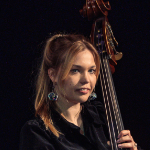The Art of being a Host
08. February 2024
#1to1dialogues
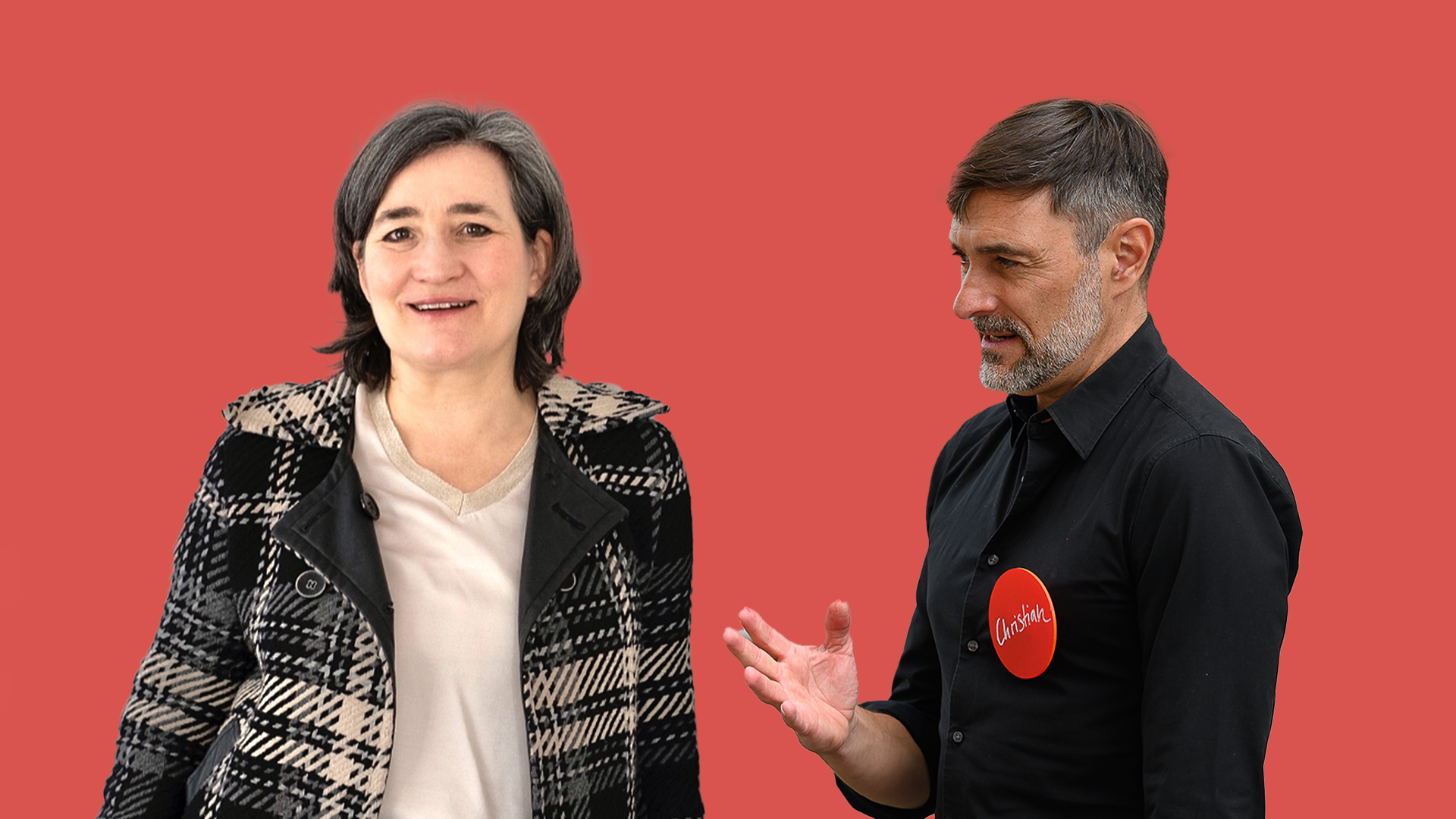
Welcome to this fourth edition of 1:1 DIALOGUES. Our new format always begins with a 1:1 Insta Live conversation - for an entertaining 15 minutes, just like every 1:1 CONCERT. Later you will find the conversation on our website, as an extended transcript. Every month, either Christian or Franziska speak with a new dialogue partner about a topic close to the heart of the broader 1:1 COSMOS. Here are the three previous 1:1 DIALOGUES on the topics of improvisation, melancholy and reduction.
This fourth edition is about THE ART OF HOSPITALITY which plays an essential role in the choreography of a 1:1 CONCERT. In our concert format, we regard musicians and hosts as siblings. Both act hand in hand, at eye level, and both are equally important for a successful and memorable 1:1 CONCERT. In this fourth 1:1 DIALOGUE, Christian invited the very first "pandemic" 1:1 HOST: the Stuttgart-based gallery owner Imke Valentien. Christian and Imke know each other from the first 1:1 tryouts during the pandemic lockdown, when Galerie Valentien in Stuttgart became the first 1:1 venue and the format was adapted to the pandemic situation. Previously, during the first 1:1 CONCERTS at the 2019 Summer Concert Festival at Volkenroda Monastery, the role of the hosts had been called “facilitator“.

Die Gastgeber:innen 2019 waren die Vermittler:innen, ganz haptisch und in der Stille.
In 2019, for example, the facilitators equipped their 1:1 listeners with sound-absorbing headphones, took them by the hand and accompanied them to the respective concert venue on the festival site. This facilitating or “mediating“ role was then adapted to the pandemic conditions in Stuttgart: after all, suddenly it was private hosts who invited the listeners into their own homes or workplaces - e.g. in a gallery - and also set them up scenographically as concert venues.
Christian and Imke talking about „the art of hosting art (and music)“
Christian: Dear Imke, welcome! What a pleasure to be your host today!
Imke: Thank you very much for inviting me to this 1:1 DIALOGUE. I am very happy to be part of the 1:1 COMMUNITY. 1:1 CONCERTS are a special concept with special people. For me, it also means stepping out of my habitual everyday life and immersing myself in a different world, while at the same time creating connections and synergies.
Christian: As a matter of fact, you play a very important role in our 1:1 COSMOS. How did you become the very first 1:1 host when the project was relaunched in Stuttgart during the pandemic?
Imke: Your good friend and 1:1 co-initiator Stephanie Winker approached me at the very beginning of the pandemic. She already knew the gallery and asked me whether it would be possible to use these rooms for the concert format during the time when everything had to be closed. Back in the day, my gallery was at a different venue, in a historic villa - in the photos from 2020 you can see that the setting was simply ideal for the 1:1 CONCERTS. We just gave it a go. And then the Stuttgart State Orchestra and the SWR Symphony Orchestra quickly joined us with their musicians and we set out on this journey. First of all we had to find out how far we could go, where we could meet, and with how many people at the same time? At some point, even the state opera's medical officer came to have a look.
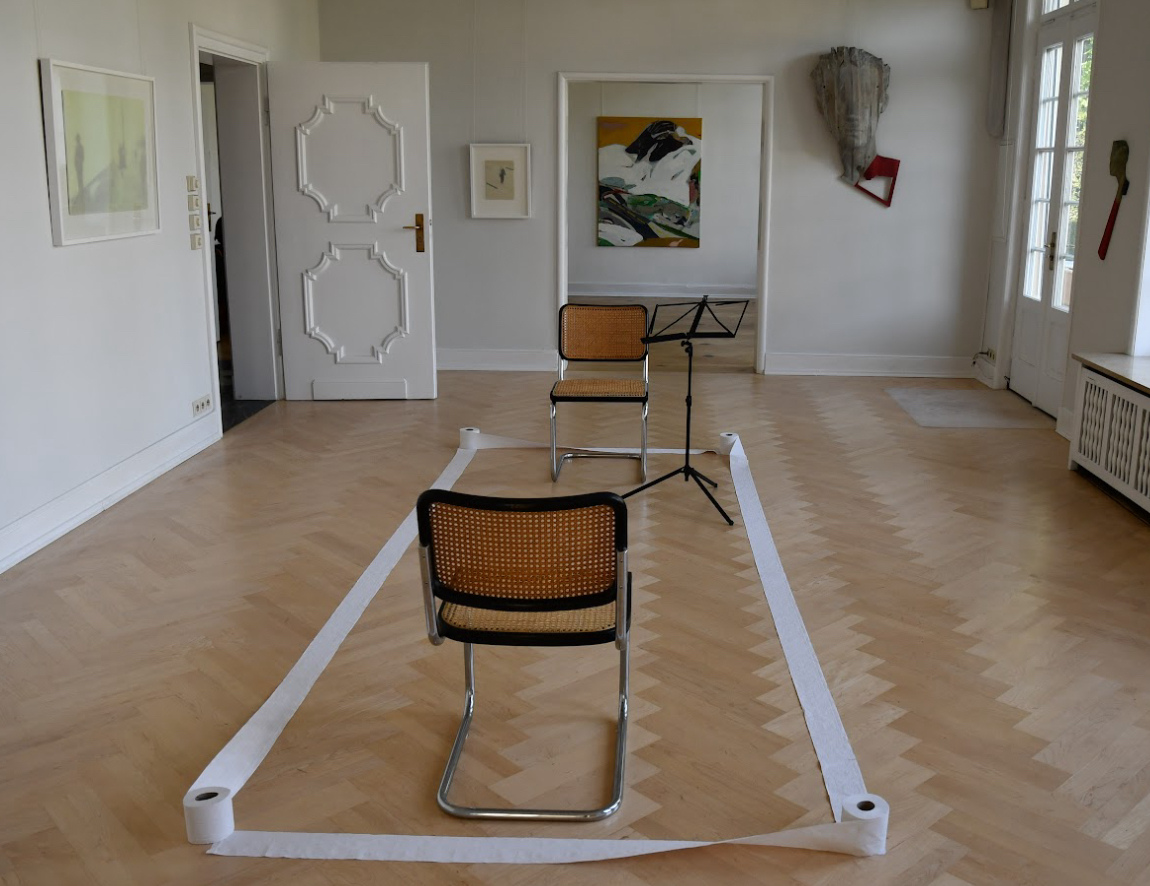
Der erste 1:1 Konzertraum der Pandemie in den Räumen der Galerie Valentien.
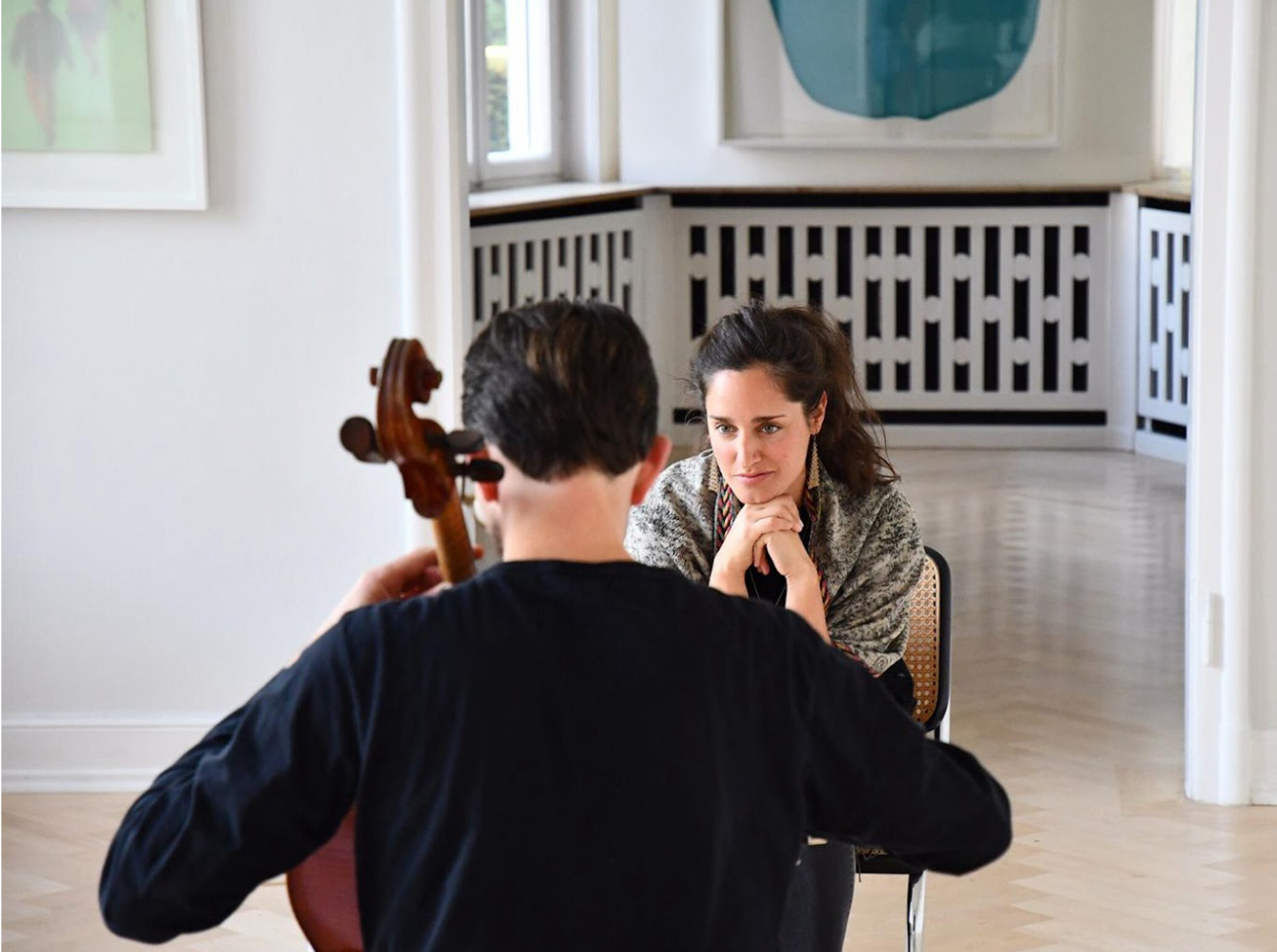
1:1 CONCERTS in der Galerie Valentien, mit Musiker:innen des Staatsorchesters Stuttgart und des SWR Sinfonieorchesters.
Christian: Indeed! And the crazy thing was that you hosted countless 1:1 CONCERTS back then. Have you ever counted how many there were in total?
Imke: I estimated it at some point, but there have been more since then, I guess altogether I hosted more than 300 1:1 CONCERTS.
Christian: Amazing, what an enormous amount! Even back then, you looked many people into the eyes and accompanied them to the concert, especially emotionally! Do you see any parallels with your work as a gallery owner? I visited an exhibition in a Berlin gallery last week, for example, but there was no host to greet me. The exhibition was fascinating, but somehow it didn't touch me personally. When people come to your gallery, the experience is completely different.
Imke: Well, I presume that the parallels between the work of a 1:1 HOST and that of a gallery owner are actually quite obvious. I probably also enjoyed it so much because this is exactly the part of my gallery work that I love most. Especially the contact with people. As a host at 1:1 CONCERTS, you also have the task of explaining and introducing the audience to the upcoming performance - also mentally - and getting them in the mood for it. I still remember how you explained to me how to do this. I then developed my own style from the incredible amount of valuable tips you gave me. The 1:1 CONCERTS are really about preparing someone for what is to come. And also about taking care of them after the concert. It's similar to the gallery work, but there the focus is more on mediation. It's actually just like at 1:1 CONCERTS, except that for the 1:1 HOST it's the music and for me it's the art. However, the art doesn't really move or speak, I'm responsible for that as a mediator, but you also have to be able to let the art speak for itself. When someone comes to my gallery, I first let him or her see for themselves, take in the things and just behold Then some of them react. I exhibit a very broad spectrum of artworks and styles and sometimes visitors react very strongly. Others remain indifferent and that’s where my work begins. However, I think it's important that the art speaks for itself at the beginning and that everyone has enough time to form an opinion and engage or get involved with the art. The most important things are always time and space - you have to be able to grant your visitors both. Some gallery owners do that, others don't. So, if you say that nobody greeted or took care of you when you entered the Berlin gallery, then I can also relate to that because you want to leave exactly that space. Yet, of course, it would be important to say something like: "Why don't you first have a look around and I'll be right with you, then we can talk about it". That's my concern and I believe that's a real parallel to the 1:1 CONCERTS.
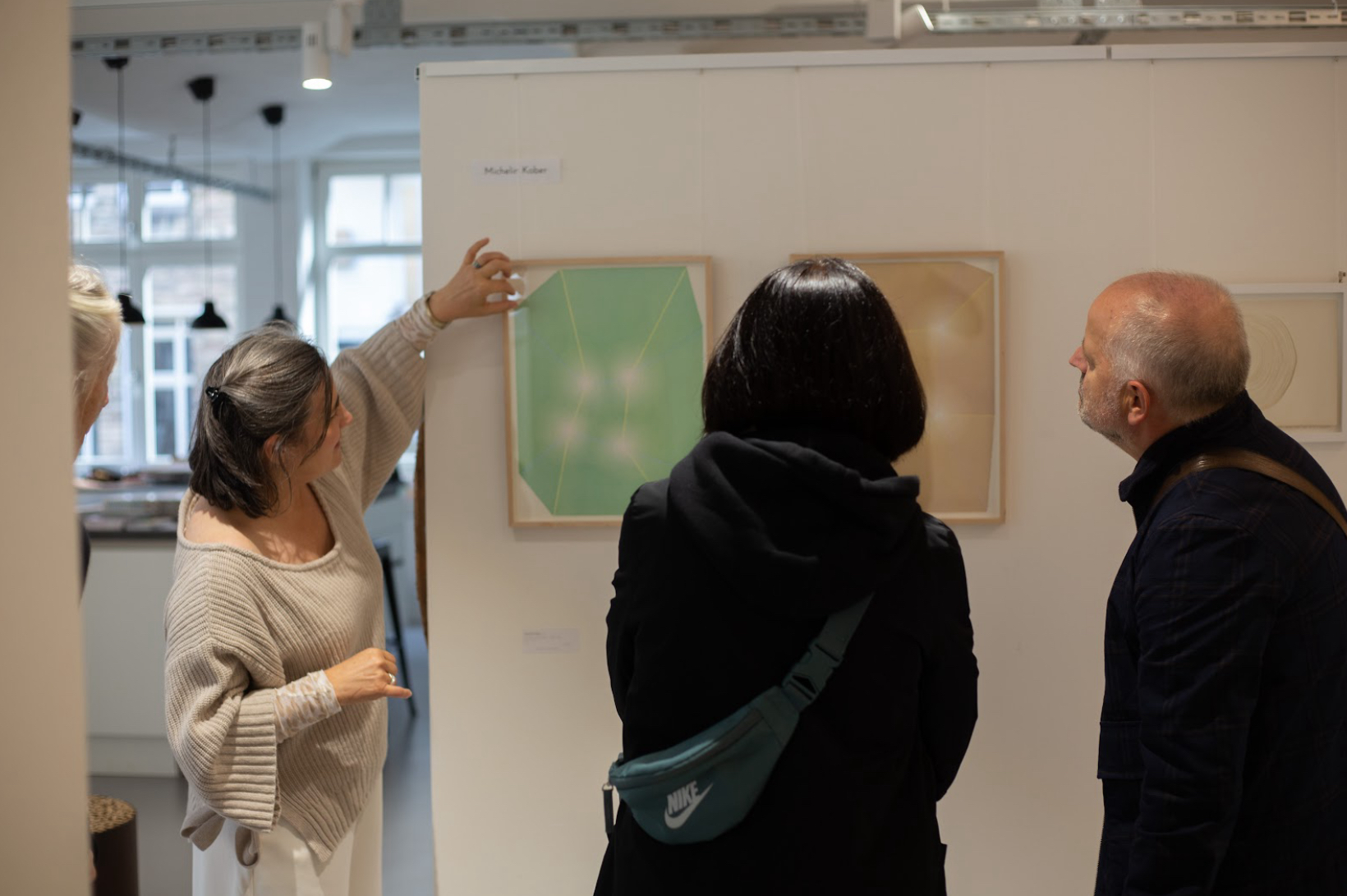
Imke Valentien als Vermittlerin der ausgestellten Kunstwerke in ihrer Galerie.
Christian: How fascinating! You know that in my "other" life, I have been working for many years as a “host“ on board of aeroplanes at 25,000 feet. And there I can also see a parallel to your gallery work. It's important to take care of each guest individually. One person needs a little more attention or “mediation“, another may already know their way around so you don't have start from scratch. A lot of intuition is required: who needs what from me and when? Does that resonate with you and your work in the art world?
Imke: Yes, absolutely. We gallery owners have a wide range of tasks: from bookkeeping to website management, from art selection and curating to customer and visitor care - gallery visitors don't always become customers straight away (laughs). Of course, the moment when someone enters the gallery is of particular importance: how do they behave and look? What do they want from the art and how do they approach it? What are their specific needs at that moment? I know people who come by regularly. One day they are very open and talkative, the next they just want to walk quietly through the gallery. That's not because of the art or because of me, it's what those who visit me bring along. I want to sense that and respond to it, and of course it requires a bit of sensitivity and a bit of psychological experience. Basically, we are always somehow psychologists. And this is also a parallel to the 1:1 CONCERTS. Some listeners don't want a long explanation because they are impatient and can hardly wait for the concert to start. You have to ground them first and perhaps keep the briefing short, otherwise they would get annoyed. You simply have to approach people and get a feel for them. Of course, this happens in a matter of seconds: how does someone look when they come in, how do they walk, how do they move? Yes, and sometimes you're wrong, of course, but you can learn from that, too.
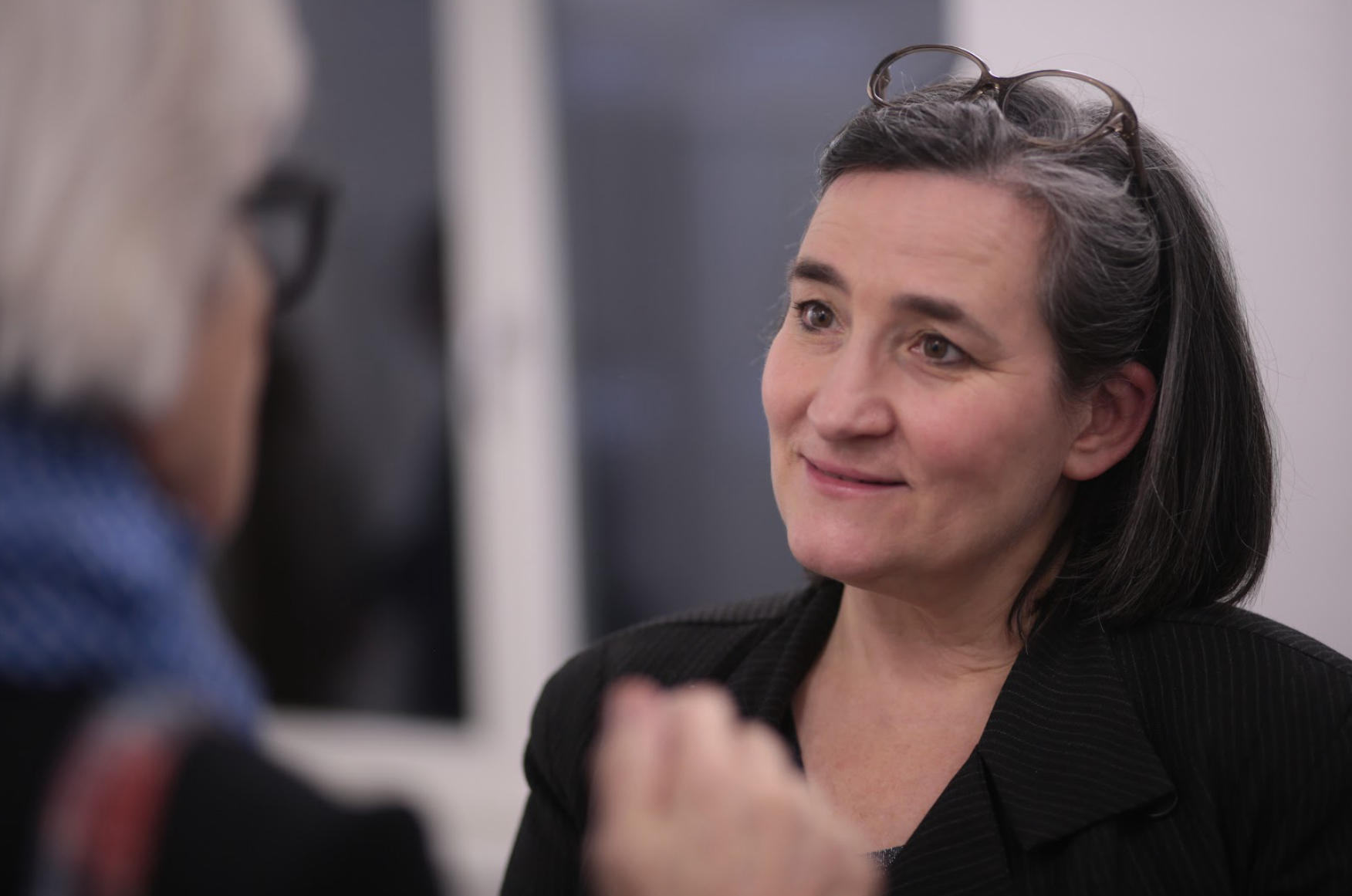
Imke Valentien: „Auf den Menschen zugehen und fein erspüren.“
Christian: And with all of these over 300 1:1 CONCERTS that you have hosted, what was your favourite moment or your biggest challenge?
Imke: One particular challenge was a leading politician from Baden-Württemberg who listened to my introduction but was then a little distracted by the art inside. That's quite commendable in itself, but after all these concerts aren't really about the art, they're primarily about the music. However, this listener just had an extended look around. Afterwards, I wondered whether he had had a nice 1:1 CONCERTS experience despite all the distraction.
The best experiences were actually always with those kind of listeners who dared to express their emotion. Basically, the 1:1 CONCERT listeners are all moved in one way or another. Some hide it, in Swabian business style, but many really need a handkerchief because the concert is so emotional for them and they simply burst into tears - positive tears, so to speak. Once there was a lady who said that her husband had died a month ago and she was a little worried about how the concert might affect her. But she was so happy when she came from the concert, literally beaming. She then said it had been exactly the right thing for her. Well, encounters like that were really very special, and that's why I enjoyed doing it so much, because you take it with you and it stays with you forever.
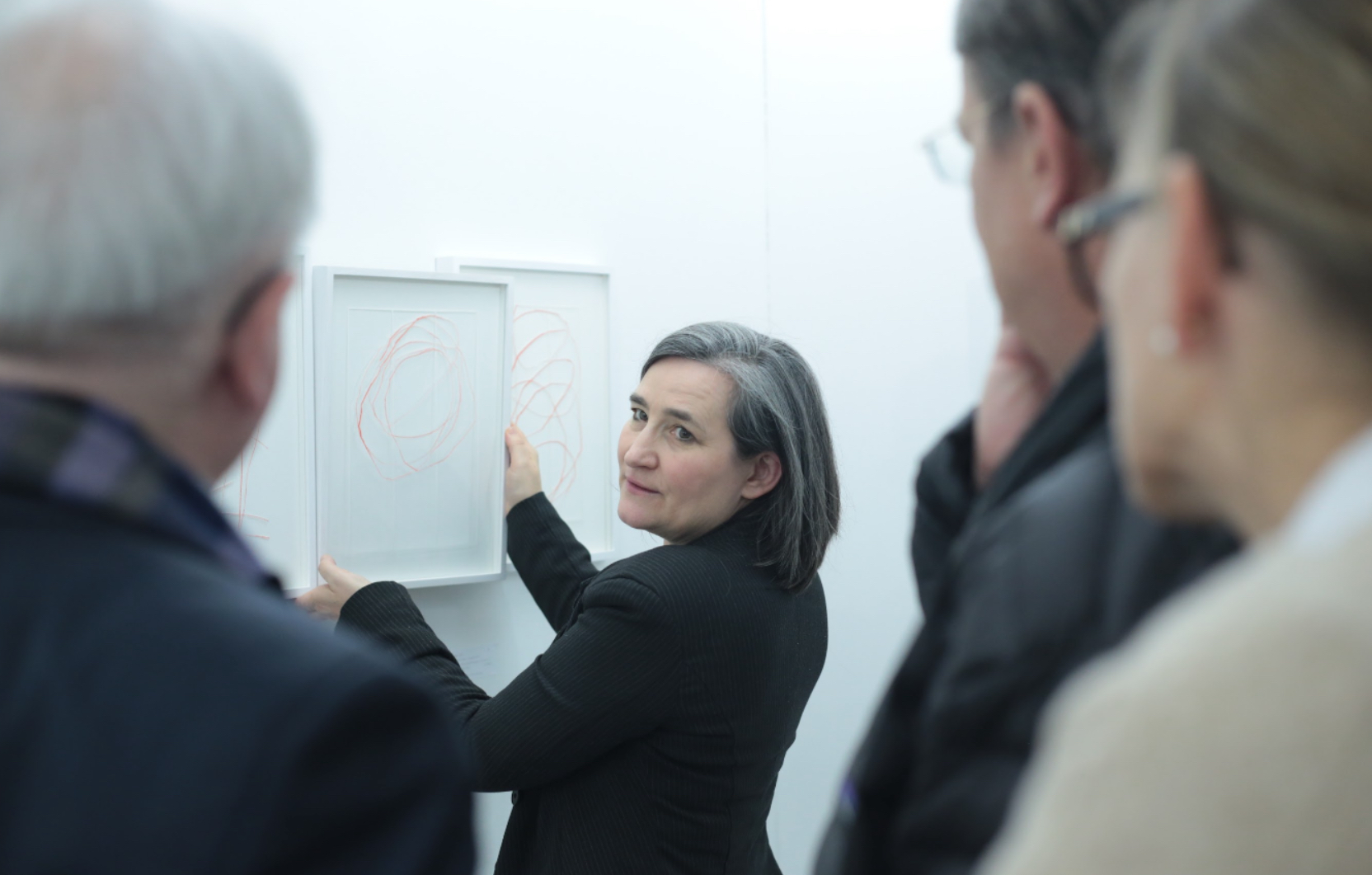
Die Galeristin als Gastgeberin - „Stets mit Feingefühl für das Gegenüber.”
Christian: Thank you for sharing these intense experiences with us, including these synergies with your own work. Do you think it's possible to learn this way of introducing music or art? What could you teach a young aspiring gallery owner about the role of hosting in art?
Imke: That's difficult to say. A parallel to the 1:1 CONCERTS is that both buying a piece of art and reacting to a concert are emotional. And if you allow this emotionality, you can go a long way. But I'm also old fashioned when it comes to that: the customer is king and everyone who comes in is treated equally. Of course, there are colleagues who do things differently, as you've noticed. And when you walk into a big, famous gallery, appearance is no longer important these days. Back in the day you knew that if your customer is wearing a suit, you can take them seriously and otherwise not. That's rubbish. But it's important to me to approach my guests right from the start, to give them space and at the same time to apprehend what I can give to them. That's very important. It often leads to wonderful conversations. By the way, I also have many customers who I consider friends, because we have had so many wonderful conversations about art, in front of art, but also about life, and what both bring about. That is extremely valuable. I would say to aspiring gallery owners: be authentic! And always be sensitive to the other person.
Christian: There are quite some people watching us live on Insta right now: maybe you can be ”our“ host for a moment and introduce us to the great works of art behind you?
Imke: I would love to! I have an exhibition here by the artist Ingrid Hartlieb who mostly works with individual, assembled pieces of wood. Hartlieb has gone through many different phases in the many years of her work, but has always remained true to her style. She first makes preliminary drawings of three-dimensional works and then realises them. The works consist of composite wood, first cut and then glued and joined together - as in this "lifebuoy", for example, which forms a circle. Or here we also see smaller sculptures consisting of assembled wooden elements. Here, the result is a wooden pile lying around here in a relatively modern way.

Ingrid Hartlieb, „Großer Rettungsring“ und „diverse Fluchtwerkzeuge und Abstandhalter“ (verleimte Hölzer)
The works have names such as "escape tools" and "spacers". Hartlieb wants to depict emotions and express the fears and doubts that live within us, yet she also wants to remain vague. If, for example, this piece means "escape" and a horizontal pillar means "spacer", then she is saying: "Of course you can also use it to keep your distance, but it is particularly important that you decide for yourself what that means.“ None of this has anything to do with the refugee crisis, as perhaps you might think. The works were all created in the 90s. They are simply objects that trigger a dilemma, an ambivalence: a "lifebuoy" like the one here is of course far too heavy to save anyone at all. Hartlieb rarely makes figurative things, her works are mostly abstract objects that you can identify with. I have a major exhibition with Ingrid Hartlieb at the Art Karlsruhe art fair from 22 to 25 February 2024.
Christian: Thank you very much for this very personal and individual introduction, this hosting of the art exhibited by you. By the way, "spacer" also resonates quite nicely with the pandemic and our work at 1:1 CONCERTS. How long can Hartlieb’s works still be viewed at your gallery?
Imke: The exhibition will run until 10 February 2024 and then in the special presentation at the Art Karlsruhe trade fair. By the way, Hartlieb and I have been selected for a feature in the Art Karlsruhe trade fair magazine, where there is a long article about the artist. It's wonderful that older artists are also promoted there. However, you will also see more recent works by Hartlieb there.
Christian: Dear 1:1 followers: feel free to meet Imke in Stuttgart and Karlsruhe, where you can experience her as a host and exhibitor and maybe even buy a work of art.
There's one thing I'm really interested in: will there be any future collaborations between you and 1:1 CONCERTS?
Imke: Absolutely, and with pleasure. We are always good at coming up with new scenarios. I'm in charge of the 1:1 Team Stuttgart and we're currently planning a collaboration with a local hospital where they have a big research project on the importance of music and art in the treatment of neurological cancer. They’ve started with museum tours and we want to get involved with music, i.e. 1:1 CONCERTS. I find that incredibly exciting and I'm very happy to be part of it.
Christian: We will keep you up to date. Many thanks to you, dear Imke, for this wonderful 1:1 DIALOGUE and your interesting guided tour, great thoughts and resonance!
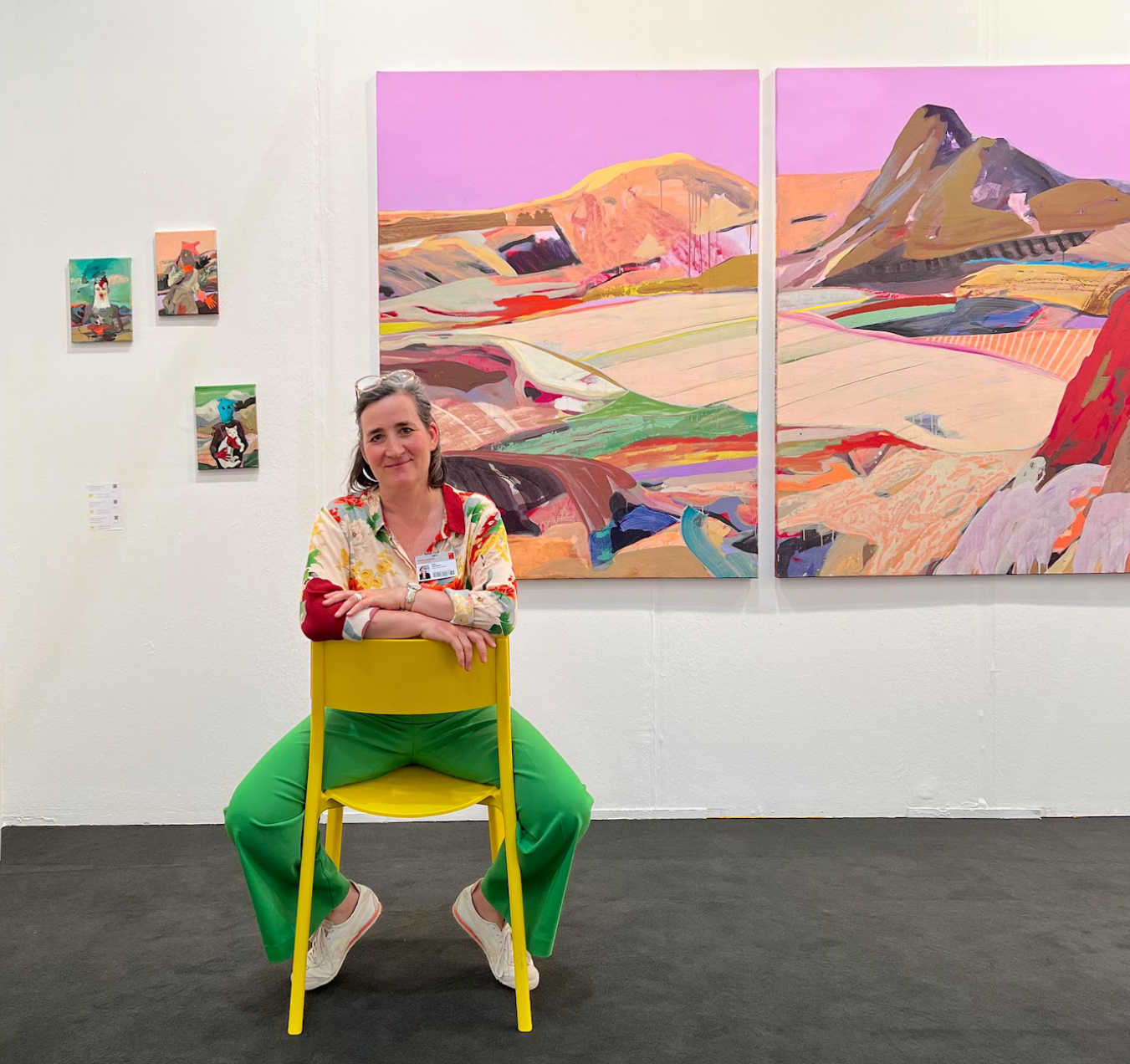
Imke Valentien auf der Kunstmesse Art Karlsruhe,vor Werken von Anne-Sophie Tschiegg.
